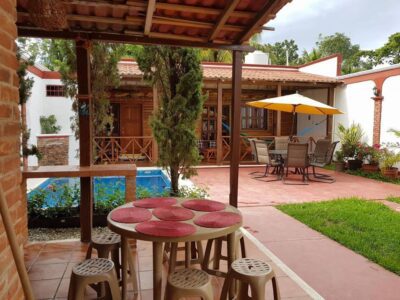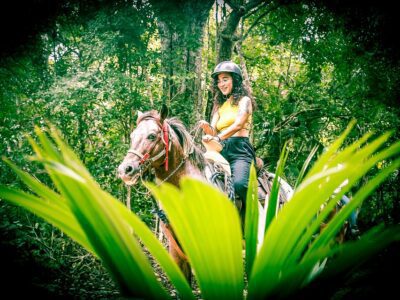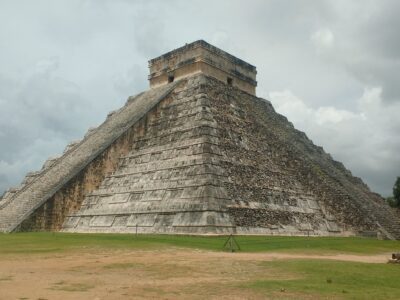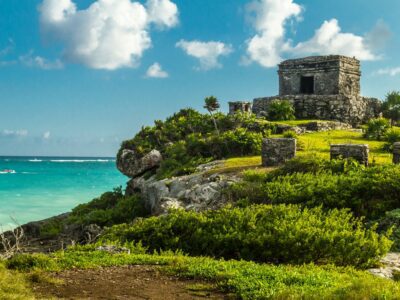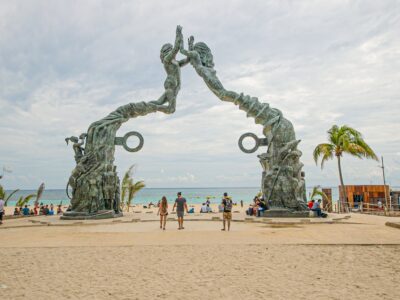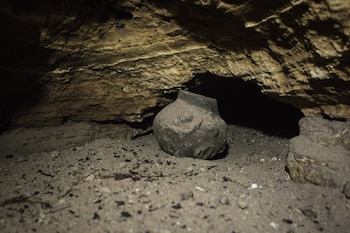In 2018, an archaeological exploration rediscovered a thousand-year-old Mayan ritual zone that provided precise data on the pre-Hispanic civilization.
The rediscovery of Balamkú (the cave of the Jaguar God) in 2018 was classified by the National Institute of Anthropology and History (INAH) as one of the most important archaeological discoveries of the 20th century due to the feat of finding a sanctuary under the emblematic Mayan city of Chichén Itzá that was approximately one thousand years old.
The Balamkú cave was considered a sanctuary in which multiple rituals of the Mayan culture were performed, proof of this is that pottery vessels, totems, and other ceramic figures were found in the place. When they analyzed the recorded material, they discovered that the place had remained intact for almost one thousand years.

Guillermo de Anda is the director of the Great Maya Aquifer Project, which investigates the aquifer of the Yucatan Peninsula, an important reserve of historical material located in cenotes and underground rivers.
During an expedition looking for waterways to reach an aquatic settlement beneath the archaeological site of Chichén Itzá, the archaeologist contacted Luis Un, a resident of the nearest town of Mayan origin, who told him about the existence of a cenote he had visited when he was a child.
According to Anda, the place was sealed with stones, which they managed to remove and thus access the cenote that led them to the entrance of a narrow tunnel that the archaeologists did not hesitate to enter.
The appearance of a “Coralillo” snake stopped the investigation for a few days, since according to the Indigenous Maya people living in the area, the reptile represented the guardian spirit of an ancient sanctuary, and having desecrated the place, it was necessary to perform a ritual to ask for forgiveness and be absolved of any wrongdoing.
A Mayan priest was the one who prepared the offering for the guardians of Balamkú and asked them to allow the researchers to enter.
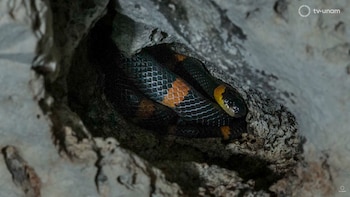
Upon returning to the cave, the snake was still there, but it did not prevent the archaeologists from passing through, so they reached their destination, amazed by the discovery that could provide crucial information to understand important unknown aspects of the Maya culture.
After the discovery, the team of researchers dedicated themselves to tracking down historical archives of any possible antecedents of the place and found that the entrance to the cave had been previously found by an archaeologist commissioned to the area, but he decided not to explore it or report the event for unknown reasons.
However, in the Mayan community of the municipality of Tinum, Yucatán, the rumor began to spread that they had discovered Balamkú.

In 1966, members of the community of San Felipe learned of the cave after a 13-year-old Mayan boy discovered it while digging in the area in search of water. Today the boy who discovered the sanctuary is known as Don Esteban Masón and he is 71 years old.
TYT Newsroom
The post The secrets of the Balamkú cave: the Mayan sanctuary discovered under the pyramid of Chichén Itzá first appeared on The Yucatan Times.



